As battery demand grows, recycling needs to capture more of the valuable resources in each cell
Global demand for batteries is surging. Lithium-ion cells are being incorporated into ever-wider areas of consumer and industrial life, but one of the biggest drivers of battery demand is the accelerating transition to electric vehicles (EVs). EV numbers are predicted to rise by 36% per year globally, passing 245 million vehicles by 2030.
The lithium-ion batteries that power a typical EV might contain around 29kg of nickel, 8kg of cobalt and 6kg of lithium. Meanwhile, dumping expired batteries can contaminate the environment with toxic compounds, or cause them to degrade, self-ignite and start fires in landfills. An obvious answer is to recycle batteries for their valuable materials, and create a more circular battery economy.
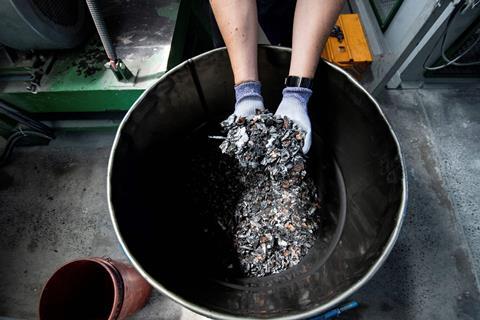
Spent EV batteries can be refurbished for use in applications where weight or volume-based performance requirements are less critical, such as stationary storage and backup power. Nonetheless, these batteries will eventually need to be recycled. Fraunhofer ISI has estimated that from 2035, automotive batteries will become the largest share of batteries for recycling. ‘The challenge is huge,’ says Christophe Couesnon, head of battery sustainability at Solvay in France. ‘End-of-life batteries from cars will first come as a trickle, but then arrive in huge volumes that will be challenging to deal with.’ Car batteries today are expected to last around 15 years.
‘Transition metals like copper, cobalt and nickel are the highest value components within batteries,’ says Emma Kendrick, a battery researcher at the University of Birmingham, UK. ‘But there are other critical materials within batteries such as lithium and graphite.’ She has assessed Li-ion battery recycling processes in dozens of companies. While almost all lead-acid batteries are recycled, estimates suggest only a small fraction of lithium-ion batteries get recycled in countries such as the US, certainly less than 10%. Even China, the world’s largest battery producer, is estimated to recycle less than half.
Once a battery reaches its end of life, it must be brought to a recycling facility, discharged for safety and dismantled. What remains is then put through an industrial shredder and mechanically sorted to generate ‘black mass’, which contains lithium, manganese, cobalt and nickel, among other components depending on the battery construction. Mechanical treatment involves crushing, vacuum drying, sieving and milling. Material extraction can then begin. Size, density and magnetic separation may be used to take out components like current collectors, casing materials and separators. What happens next varies.
It’s a bit like making a Victoria sponge cake, then sticking the entire thing through a shredder and hoping to reclaim the jam and cream
Traditionally, battery recycling is not particularly sophisticated, chemically speaking, Kendrick explains. ‘Often you stick it in the shredder, and then you try and sort it out later.’ With large plants required for economic viability, it can be difficult for innovative startups to get established, she adds, although incentives are on the way.
One major regulatory push for recycling is the EU’s ‘digital passport’ requirement for batteries, which will include environmental data, such as carbon footprint. It will also require half of a battery’s mass to be recycled, rising to 70% for lithium-ion batteries from 2040, along with some specific requirements for metals. The recycle rate for lithium, for example, will go from 35% to 75% between 2026 and 2030, creating a substantial obligation for manufacturers. In the US, the Inflation Reduction Act offers financial rewards for domestic battery material production. Recycling offers an attractive prospect in countries where new mining will likely face opposition on environmental grounds.
Separation anxiety
Many recyclers, including giants like Umicore, begin with a pyrometallurgical step, whereby battery materials are smelted above 1200°C. Umicore’s process produces metal alloys containing cobalt, nickel, lithium and copper. The company then uses a hydrometallurgical process to separate and recover the metals separately, claiming recovered yields of over 95% for cobalt, copper and nickel from a range of battery compositions. These can then be remanufactured into cathode materials.
Hydrometallurgy relies on strong acids such as sulfuric or hydrochloric acid in tandem with powerful redox reagents such as hydrogen peroxide. ‘You can also use a hydrometallurgical route to extract the components directly, without going through the pyrometallurgical stage,’ says Kendrick. One issue with placing batteries into a furnace is the energy consumption, but also that lithium is partially lost at high temperatures, rather than captured. On the other hand, more complex hydrometallurgical methods often require a more complex (and expensive) mix of potentially hazardous reagents.
In Finland, Fortum opened a mechanical shredding plant in 2021, and has since built a new pilot-scale hydrometallurgical facility to recycle electric car batteries. Once completed, it will be among the largest in Europe and will recover over 95% of the valuable metals including lithium, cobalt, manganese and nickel from black mass, according to the company. In March, Fortum began an operation in Germany. Also in Scandinavia is Hydrovolt, a joint venture between battery company Northvolt and energy and aluminium provider Hydro. Hydrovolt opened Europe’s largest EV battery recycling plant in Norway, capable of processing 12,000 tons of battery packs each year. It says it will isolate some 95% of battery materials, such as copper, aluminium and black mass.
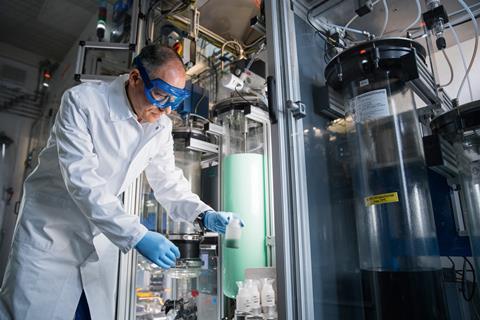
BASF is building a commercial-scale black mass production plant in Schwarzheide with an annual processing capacity of 15,000 tons of lithium-ion batteries from electric cars. It is scheduled to begin operations in 2025. The company is also building a prototype recycling plant in Schwarzheide to test and refine its hydrometallurgical technology for recovering lithium, nickel, cobalt and manganese from black mass. ‘Our refining process is based on known technologies from the mining industry as they are also used by other recycling companies,’ according to a BASF spokesperson. ‘We optimise these processes end-to-end to make them suited for recycling batteries into battery grade metals.’ To recover lithium, BASF will lean on a process from Tenova Advanced Technologies, with proprietary solvent extraction and lithium electrolysis.
Solvay is also developing new ways to recover lithium, collaborating with hazardous waste recycler Veolia. Today, hydrometallurgical extraction normally first removes cobalt, then nickel and finally lithium, by which time much of the lithium has been lost. ‘We have a [laboratory scale] process that can bring a step-change to extracting lithium,’ says Couesnon.
Where lithium is currently extracted at all, it is mostly as lithium carbonate, he notes. Battery makers must then use more water, energy and reagents to obtain lithium hydroxide for batteries. ‘Our process can go directly from the lithium content inside the battery to lithium hydroxide,’ says Couesnon. Today, this battery ingredient is not in demand in Europe, since there is so little battery manufacturing, ‘but in a couple of years there’s going to be huge demand’, says Couesnon.
A lot of black mass processes will produce individual metal salts, but why extract these to put them back together in cathode materials?
Demand creates opportunities, says Laura Lander, a battery engineer at King’s College London, UK. ‘There’s a trend for a lot of recycling startups in Europe, as recycled material becomes more valuable.’ One example is Cylib, founded in 2022 on the back of processes developed at RWTH Aachen University, Germany. From the start, the company aimed to recycle as much of battery ingredients as possible using combinations of thermal, mechanical and metallurgical steps.
‘Our process extracts plastics, copper and aluminium early, then we perform water-based lithium and graphite extractions,’ says Gideon Schwich, a cofounder of Cylib. ‘This lowers the mass significantly, so we need less effort and less chemicals to extract further elements.’ For now, the startup recycles one EV battery per day, equivalent to 500–800kg, but it expects to start a production line capable of recycling thousands of tonnes per day in early 2026, likely in Germany. Graphite production, says Lander, is quite polluting, so recovering graphite will have a positive environmental impact and will likely be incentivised by European regulators.
Cleaner streams
With more battery material becoming available to recycle, new processes are being explored. One potential strategy is called direct recycling: instead of destroying and then recovering metals, this seeks to extract materials that could be repaired or remanufactured for use in new batteries. ‘A lot of research is going into ways to directly take a battery apart and separate out the cathode and the anode and recover the materials as they are, without mixing them all together,’ says Jaqueline Edge, mechanical engineer at Imperial College London, UK. ‘In recycling, if you mix the stream, then you don’t recover the valuable components.’
RecycLiCo Battery Materials in Canada aims to directly recover battery-ready materials. It has built a demonstration facility in Vancouver that can process around 800kg of lithium-ion battery waste material each day. ‘We worked with different black mass and cathode chemistries, such as LCO [lithium cobalt oxide], NMC [nickel manganese cobalt], NCA [nickel cobalt aluminium] and even now LFP [lithium iron phosphate],’ says chief executive Zarko Meseldzija. He adds that the demo plant has achieved over 99% extraction of lithium, nickel, manganese and cobalt using its hydrometallurgical process.
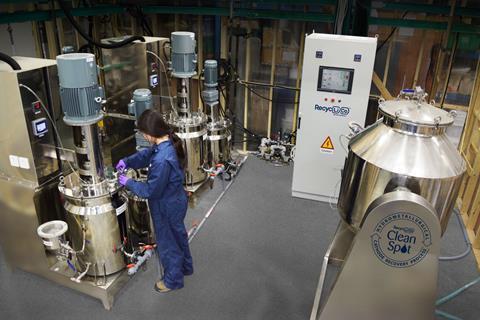
The firm says its process is simpler and cheaper than its competitors, which generate less valuable products. Crucially, it generates high-purity lithium carbonate or hydroxide and cathode precursor materials, rather than constituent metals. ‘There is an awful lot of crushing of batteries and black mass production, but we are focusing on the hydrometallurgical side at scale,’ says Meseldzija. ‘A lot of black mass processes will produce individual metal salts, but why extract these to put them back together in cathode materials? We go direct to cathode precursors and lithium hydroxide.’
One notable issue for recyclers is that battery compositions are evolving, with less cobalt in EV batteries and some new elements such as silicon in anodes. Also, the prices of battery metals can fluctuate wildly, with cobalt peaking around $80,000/tonne in early 2022, then dipping below $35,000 in March 2023. Lithium carbonate cost around $8000/tonne at the start of 2021, rising to about $58,000 in November 2022, before falling back to around $20,000 by mid-April 2023. This can make it difficult for recyclers to pin down their returns when constructing facilities.
Everybody’s talking about electric vehicles and recycling, but there is a significant amount of material lost in the early stages of battery production
For now, the major source of battery scrap is battery production itself. Benchmark has forecast that in 2025 production scrap will account for 78% of the pool of recyclable materials from batteries, with end-of-life scrap only overtaking this in the mid-2030s. ‘Everybody’s talking about electric vehicles and recycling, but there is a significant amount of material lost in the early stages of battery production,’ says Meseldzija. What is more, it makes sense for battery manufacturers to recover this scrap, no matter how much the price of individual metals see-saw. Cylib too sees its initial production focus on recycling scrap from battery production factories in Europe. ‘There are so many gigafactories being set up right now and their production scrap has to be recycled,’ says Schwich. ‘That’s a huge opportunity.’
Nonetheless, it would be wrong to suggest that Europe or North America are leading the way in battery recycling. In terms of volume, China is unsurpassed, providing more than half of estimated global battery recycling capacity of around 200,000 tonnes per year. The battery maker CATL, for example, is about to build a new 24 billion yuan (£2.8 billion) recycling facility to recover battery waste. GEM, a Chinese recycling firm, aims to process 200,000 tonnes a year by 2025, a 20-fold rise in volume from 2021 levels.
Other countries are also keen to establish robust local supply chains. In South Korea, two battery recyclers made strong stock market debuts, according to the Financial Times. ‘Battery recycling is becoming more important in terms of energy security as battery makers are keen to reduce their dependence on China in securing key materials,’ an analyst told the newspaper. Indian battery recycler Attero plans to expand globally over the next five years with a $1 billion investment to set up facilities in Europe, the US and Indonesia.
Building in circularity
But there is room to step up a gear in recycling processes. ‘The electrolytes, the solvents and the plastics all disappear in current processes and are much harder to recover, but the electrolyte for example is valuable and can contain high concentrations of lithium,’ says Edge. One issue is that batteries are simply not designed for recycling, with variations in pack designs and cathode composition, while glues and binders make automated disassembly more difficult. ‘Only very recently is thinking going into the design of batteries for disassembly and recycling,’ says Lander.
‘There’s a need for redesign, to start thinking about what happens to these batteries at the end of life and how we can more easily disassemble them and reclaim pure material waste streams,’ says Kendrick. ‘Because right now, we put all this effort into creating highly engineered cells and then stick them in a shredder.’ China is arguably at an advantage in facing this challenge. Recycling companies are often wholly owned subsidiaries of the automotive companies, says Edge, which allows them to collaborate more on pack design.
Kendrick said battery recycling now is ‘a bit like making a Victoria sponge cake, then sticking the entire thing through a shredder and hoping to reclaim the jam and cream’. The future of battery recycling is bound to become more sophisticated, driven by economic incentives to obtain valuable materials and a regulatory push to recover strategically important battery ingredients.





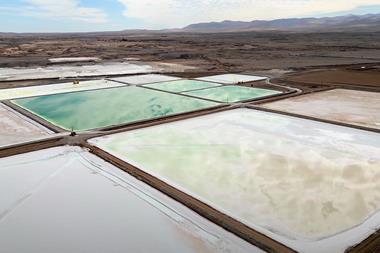

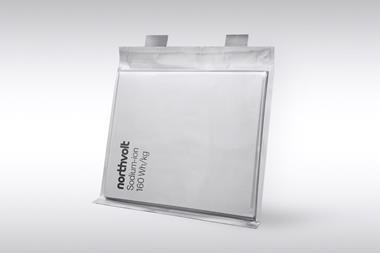
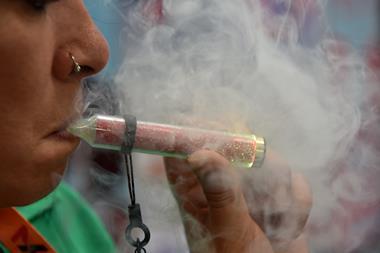








No comments yet